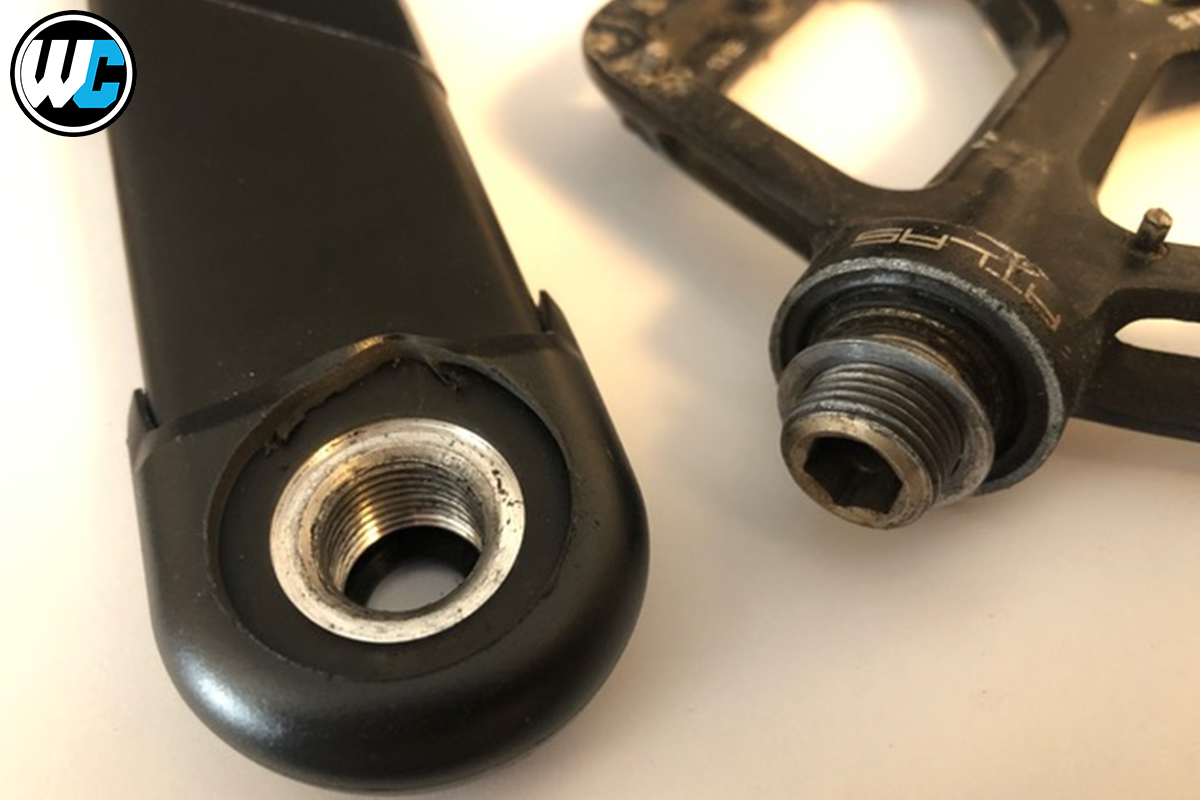- Shop
- Bikes / Frames
-
Components
- Tires / Tubes / Sealant / Valves
- Forks / Parts
- Rear Shocks / Parts
- Groupsets / Drivetrain Bundles
- Drivetrain
- Shifters
- Handlebars / Grips
- Stems
- Brakes / Pads / Adaptors
- Seatposts / Clamps / Levers
- Saddles / Seats
- Pedals / Cleats / Parts
- Wheels / Hubs / Rims
- Headsets / Parts
- Cables / Housing
-
Accessories
- Tools / Lube / Solvents
- Car / Truck Racks / Tailgate Pads
- Frame Straps
- Pumps / Inflation
- Chainstay / Frame Protectors / Fenders
- Computers / GPS / Electronics
- Hydration Packs / Bags
- Lights
- Water Bottles / Cages
- Gift Ideas / Novelties
- Indoor Trainers
- Bike Travel / Shipping Cases
- Nutritionals
- Locks
- Storage Racks / Stands
-
Apparel
- Helmets
- Jerseys
- Shorts / Bibs
- Gloves
- Shoes / Socks
- Pads / Protective Gear
- Pants
- Eyewear
- Chamois / Short Liners / Base Layer
- Chamois Creams / Embrocations / Butt'r
- Jackets / Vests / Hoodies / Flannels
- Casual Wear
- Headwear
- Brands
- Top Secret Sales (Do Not Tell!)
- Watch
- Read
- My Account
- Help / FAQ's
- Contact Us / Locations
- Call Us | 1-805-375-4525
- Why Shop With Us?
- About Us
- Continue Shopping
- Your Cart is Empty
RaceFace Crank Boots: Rider Review
Our "Rider Review" article series features the honest reviews from verified purchasers of Worldwide Cyclery. They contain the photos, thoughts, feedback & overall review you are looking for.
Crank boots have become a popular purchase for all riders to protect their bikes crank arms from rock strikes and other trail hazards. Read on to learn about friend Ben's experience with the crank boots. If you aren't sure what crank boots are right for your cranks check out our blog here to help find the right ones.
Intro:
Straight out of the bag there is nothing special about these crank boots. A few grams of Injection-molded HDPE, probably somewhere in Asia, likely at the same type of companies that produce these cheap smartphone cases that sell for a few bucks at tourist hotspots in every city.
So, why am I wasting my time writing this about a penny item then? Because it is frustrating when these types of things make surrounding, really expensive equipment perform miserably.

Experience:
To start off, compared to the SRAM boot, the RaceFace looks a bit flimsy out of the bag, but nothing to be worried about. Once on the crank, it is all snug. The fit of the SRAM boot on the SRAM crank is slightly better, but minimal and nothing worth otherwise mentioning.
What both boots have an issue with, but why I am particularly addressing this with RaceFace. They are incompatible with RaceFace Atlas pedals
RaceFace’s own Atlas pedals, that have the bearing right at the crank arm outside will not fit on cranksets that are equipped with these boots. Again, I cannot talk for RaceFace carbon cranksets, but cannot imagine that they are much different. The issue with SRAM cranks is that the threaded aluminum block is sitting relatively deep (about 2mm) below the crank surface. So the bottom line is that with only one washer installed, the pedal body screws on the boot that will prevent the pedal from turning. Running carbon fiber cranks without boots is not an option for me.
I had to drill open the boots to accommodate for my Syntace NumberNine pedals with the same outer body bearing type. One now could blame the product mix, which is why I am specifically referring to RaceFace Atlas pedals. Other brands that are built this way may face the same issue.
With the boot opening opened up by about 8mm in diameter, there is enough space between the crank and the pedal body, so it will more or less freely turn. However, this drilling action was an annoying exercise and really frustrating, considering the incompatibility of two products of the same brand. But SRAM is also not some random exotic item. Due to the small “bridge” left on the boot, I sooner or later may lose it.
SRAM X01 Eagle crank arm with opened boot hole to accommodate for RaceFace Atlas pedal body.

Final Thoughts:
What would make things better? While I like the original 20mm diameter hole that exactly fits a pedal axle and prevents the shoe from moving around, there is really no need for that material thickness on the outside of the crank. Without the boot, there is a solid 1.5mm gap between the pedal body and the crank surface. So a reduction of wall thickness to 1mm in this area where a pedal of that type potentially will need that clearance should be an easy solution.
October 12, 2019
crank boots › Customer Review › Rider Review ›
Top Products For You...
Recent Blogs
--- Shop Info ---
Newsletter Signup -
© 2025 Worldwide Cyclery








